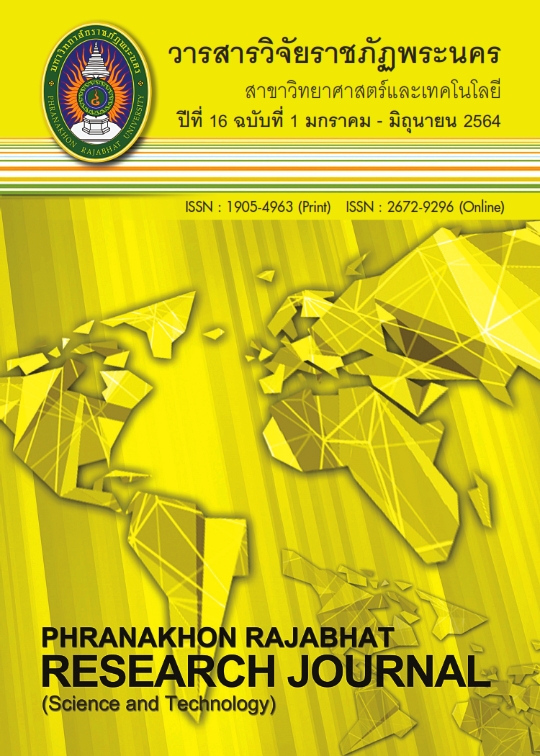ความชุกของภาวะสมองเสื่อม และความสามารถในการดำเนินชีวิตประจำวันของผู้สูงอายุ ในเขตอำเภอเมือง จังหวัดจันทบุรี
คำสำคัญ:
ภาวะสมองเสื่อม, ความชุก, ผู้สูงอายุ, ชุมชน, ความสามารถในการปฏิบัติกิจวัตรประจำวันบทคัดย่อ
การวิจัยภาคตัดขวางครั้งนี้มีวัตถุประสงค์เพื่อศึกษาความชุกของภาวะสมองเสื่อม และความสามารถในการดำเนินชีวิตประจำวันของผู้สูงอายุ กลุ่มตัวอย่างเป็นผู้สูงอายุที่อาศัยในอำเภอเมือง จังหวัดจันทบุรี เลือกกลุ่มตัวอย่างแบบเฉพาะเจาะจง ตามคุณสมบัติ จำนวน 314 คน เครื่องมือในการรวบรวมข้อมูลประกอบด้วย แบบบันทึกข้อมูลส่วนบุคคล
แบบทดสอบสภาพสมองเบื้องต้น แบบประเมินพุทธิปัญญา แบบประเมินความสามารถในการดำเนินชีวิตประจำวัน แบบประเมินความสามารถเชิงปฏิบัติ และ แบบประเมินภาวะซึมเศร้า วิเคราะห์ข้อมูลโดยใช้สถิติเชิงพรรณนา ผลการวิจัยพบว่า
1. ความชุกของภาวะสมองเสื่อมจากการประเมินด้วย แบบประเมินพุทธิปัญญาพบ ร้อยละ 85.03 และจากการประเมินด้วย แบบทดสอบสภาพสมองเบื้องต้นพบ ร้อยละ 6.05
2. ผู้สูงอายุปกติ และผู้สูงอายุที่สงสัยหรือว่ามีภาวะสมองเสื่อมมีความสามารถในการดำเนินชีวิตประจำวันพื้นฐานในระดับไม่เป็นการพึ่งพา ร้อยละ 100 และมีความสามารถในการปฏิบัติกิจวัตรประจำวันเชิงปฏิบัติในระดับพึ่งพิงทั้งหมด ร้อยละ 3.73 และ 21.05 ตามลำดับ ระดับพึ่งพิงปานกลาง ร้อยละ 12.20 และ 47.37 ตามลำดับ และระดับดำรงชีวิตได้อย่างอิสระในชุมชน ร้อยละ ำ4.07 และ 31.58 ตามลำดับ
ดังนั้นบุคลากรทางสุขภาพควรจัดกิจกรรมส่งเสริมความสามารถในการรู้คิด การจดจำ การโต้ตอบ การฝึกความตั้งใจและความสามารถในการบริหารให้กับผู้สูงอายุ ทั้งนี้เพื่อคงความสามารถในการทำงานของสมอง และดำรง
ไว้ซึ่งสามารถทำกิจกรรมต่าง ๆ ในชีวิตประจำวันผู้สูงอาย
เอกสารอ้างอิง
Aekplakorn, W. (Ed.). (2014). Thai National Health Examination (Survey, NHES V). Nonthaburi: Health
System Research Institue. (in Thai).
Aroonsang, P., Sritanyarat, W., Lertrat, P., Subindee, S., Surit, P. & Theeranut, A. (2012). Health profile
of older persons in health care institute and in community. Journal of Nursing Science and Health, 35(2), 15-24. (in Thai).
Ashford, J. W., Borson, S., O’Hara, R., Dash, P., Frank, L. & Robert, P. (2006). Should older adults be screened for dementia?. Alzheimer’s and Dementia, 2, 76-85.
Baumgart, M., Snyder, H. M., Carrillo, M. C., Fazio, S., Kim, H., & Johns, H. (2015). Summary of the
evidence on modifiable risk factors for cognitive decline and dementia. A populationbased perspective. Alzheimer’s and Dementia, 11(6), 718–726.
Boonkerd, P. (2018). The dementia association newsletter. Retrieved from http://www.thaidementia.
org/core/File/839.pdf. [2018, 3 Oct.]
Boyle, P. A., Cohen, R. A., Paul, R., Moser, D., & Gordon, N. (2002). Cognitive and motor impairments
predict functional declines in patients with vascular dementia. International Journal of Geriatric Psychiatry, 17, 164–169.
Bradford, A., Kunik, M. E. M., Schulz, P., Williams, S. P. S., & Singh, H. (2009). Missed and delayed
diagnosis of dementia in primary care: prevalence and contributing factors. Alzheimer Disease and Associated Disorders, 23(4), 306–314.
Caddell, L. S., & Clare, L. (2011). The impact of dementia on self and identity: a systematic review.
Clinical Psychology Review, 30(1), 113-126.
Chantaburi Provincial Statistical Office. (2017). Mind map and data file of elderly information. Retrieved from http://chanthaburi.nso.go.th/index. [2018, 22 August.]
Diniz, B. S., Butters, M. A., Albert, S. M., Dew, M. A., & Reynolds, C. F. (2013). Late-life depression and
risk of vascular dementia and Alzheimer’s disease: Systematic review and meta-analysis of
community-based cohort studies. British Journal of Psychiatry, 202(5), 329–335.
Foundation of Thai Gerontology Research and Development Institute. (2017). Situation of the
Thai Elderly 2016. Bangkok: Printery CO; LTD. (in Thai).
Gauthier, S., Reisberg, B., Petersen, R. C., & Essig, M. (2006). Mild cognitive impairment. The Lancet,
(9518), 1262–1270.
Institute for Population and Social Research. (2019). Population of Thailand 2018. Retrieved from
http://www.ipsr.mahidol.ac.th/ipsrbeta/th/Gazette.aspx. [ 2018, 15 August.]
Jefferson, A. L., Byerly, L. K., Vanderhill, S., Lambe, S., Wong, S., Ozonoff, A., & Karlawish, J. H. (2008).
Characterization of Activities of Daily Living in Individuals with Mild Cognitive Impairment. American Association for Geriatric Psychiatry, 16(5), 375–383.
Jeke, K., Damian, K., Wattmo, C., Hausner, L., Bullock, R., & Connelly, P. J. (2015). Mild cognitive
impairment and deficits in instrumental activities of daily living: a systematic review.
Alzheimer’s Research and Therapy, 7(17), 1-20.
Luis, C.A., Keegan, A. P., & Mullan, M. (2009). Cross validation of the Montreal Cognitive Assessment
in community dwelling older adults residing in the Southeastern US. International Journal
of Geriatric Psychiatry, 24(2), 197-201.
Mograbi, D. C., Faria, C., de, A., Fichman, H. C., Paradela, E. M. P., & Lourenço, R. A. (2014). Relationship
between activities of daily living and cognitive ability in a sample of older adults with
heterogeneous educational level. Annals of Indian Academy of Neurology, 17, 71–76.
Nuysri, M. (2016). The prevention of dementia. Journal of the Police Nurse, 8(1), 227-240.
Petersen, R. C., Doody. R., Kurz, A., Mohs, R. C., Morris, J. C., & Rabins, P. V. (2001). Current concepts
in mild cognitive impairment. Archives of neurology, 58(12), 1985-1992.
Praison, P., & Chuajedton, P. (2017). Factors related to mild cognitive impairments in elderly people
in Chiang Rai province. Thai Journal of Nursing Council, 32(1), 64-80.
Saunders, N. L., & Summers, M. J. (2011). Longitudinal deficits to attention, executive, and working memory in subtypes of mild cognitive impairment. Neuropsychology, 25(2), 237-348.
Schoenmakers, B., Buntinx, F., & Delepeleire, J. (2010). Factors determining the impact of care-giving
on caregivers of elderly patients with dementia. A systematic literature review. Maturitas, 66(2), 191–200.
Sun, Y., Lee, H. J., Yang, S. C., Chen, T. F., Lin, K. N., Lin, C. C., & Chiu, M. J. (2014). A nationwide
survey of mild cognitive impairment and dementia, including very mild dementia, in Taiwan. PLoS One, 9(6), 100-303.
Suwan, A., & Trakulsithichoke, S. (2016). Prevalence and factors associated with dementia among
elderly in Lukhok subdistrict, Muang district, Pathumtani province. APHEIT Journal, 5(2), 21-32
Trakulsithichoke, S. (2018). Prevention of dementia in older persons. Journal of Nursing and Health
care, 36(4), 6-14.
Xu, W.L., Atti, A.R., Gatz, M., Pedersen, N.L., Johansson, B., & Fratiglioni, L. (2011). Midlife overweight
and obesity increase late-life dementia risk: A population-based twin study. Neurology,
(18), 1568-1574
ดาวน์โหลด
เผยแพร่แล้ว
ฉบับ
ประเภทบทความ
สัญญาอนุญาต
โปรดกรอกเอกสารและลงนาม "หนังสือรับรองให้ตีพิมพ์บทความในวารสารวิจัยมหาวิทยาลัยราชภัฏพระนคร สาขาวิทยาศาสตร์และเทคโนโลยี" ก่อนการตีพิมพ์




